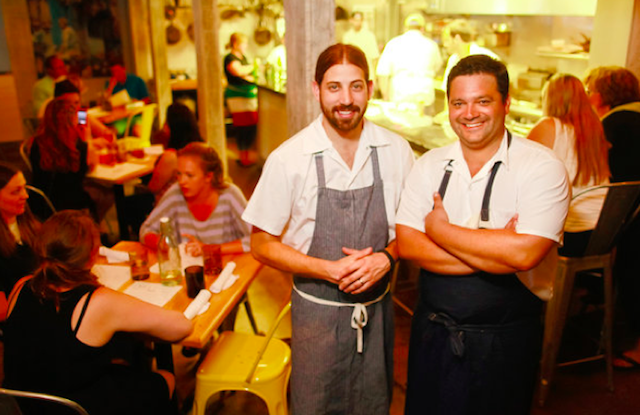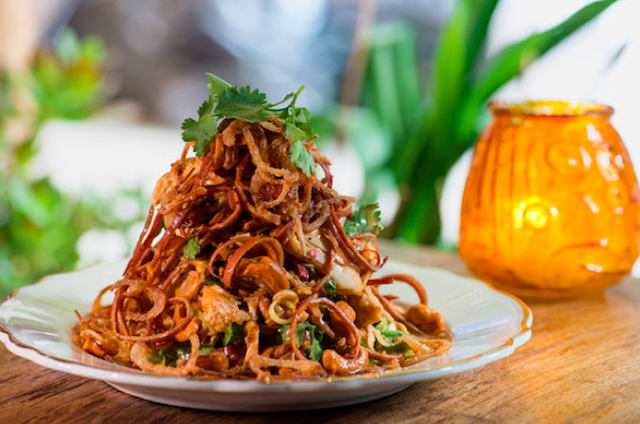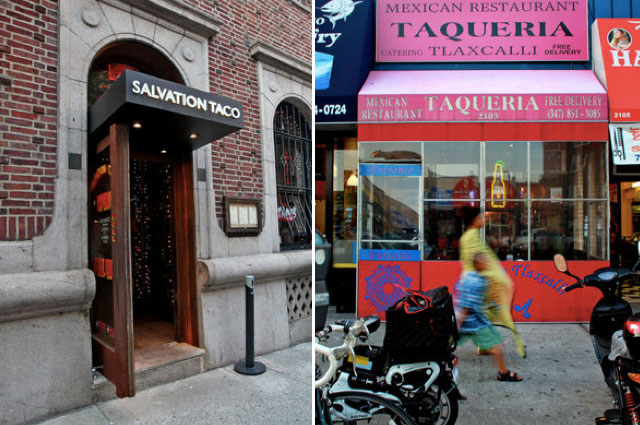Hog & Hominy & the Traveling Times Critic
 Wednesday, July 17, 2013 at 3:05PM
Wednesday, July 17, 2013 at 3:05PM  [lance murphy for the times] andrew ticer, left, and michael hudmanFor his review this week, Pete Wells files the third installment of the Critic on the Road column. The column started in early April with Wells' dual review of Oxheart and Underbelly in Houston. San Francisco's Saison was the focus of the second COTR at the end of April and, today, Wells brings us a look at Hog & Hominy in Memphis.
[lance murphy for the times] andrew ticer, left, and michael hudmanFor his review this week, Pete Wells files the third installment of the Critic on the Road column. The column started in early April with Wells' dual review of Oxheart and Underbelly in Houston. San Francisco's Saison was the focus of the second COTR at the end of April and, today, Wells brings us a look at Hog & Hominy in Memphis.
The restaurant is the sophomore effort of chefs and long-time friends Michael Hudman and Andrew Ticer. "The two men bonded in sixth grade while guarding each other on the basketball court," Wells writes. "Talking outside the gym, Mr. Hudman said, each realized for the first time that he was not the only boy in Memphis who spent “crazy Italian Sundays” at his grandmother’s house eating pasta with what each was convinced had to be the world’s best sauce."
Before Hog & Hominy, Hudman and Ticer opened Michael Andrew Italian Kitchen in 2008. That restaurant "is the dutiful and responsible first born," the critic writes. "Hog & Hominy, which they built in another ranch house across the street four years later, is the scrappy younger sibling who stays up later, keeps rowdier company and gets away with things the older brother can’t." Wells enjoys most of the food at Hog & Hominy, adores the pies, and finds that the chef's second efforts have created "a more relevant and original restaurant."
This is to the credit of the chefs' humble approach to food and a synergy they've found between their past and present. "One day Mr. Ticer was talking to the head charcutier for both restaurants, Aaron Winters, about being a kid," Wells writes, "and splitting a hot dog down the middle, and arranging cheese in the crease, and then blasting it in the microwave until it puffed up and bubbled." The result? A beef hot dog on a pretzel bun with yellow mustard, aka what Wells writes is "as good an example as you’ll find of an American restaurant vastly improving something lowbrow without falling into the trap of making it highbrow."
Critic on the Road is a pleasant break from this city's tough lovin', chew-you-up-and-spit-you-out food culture. Wells clearly takes his enthusiam and passion for food with him when he leaves town, but the reviews he writes of these experiences are without the stars and what can turn into the critic's informed, make-you-or-break-you opinions. That could change should Wells write a negative review for COTR, but that doesn't seem to be the agenda. Instead, these reviews can be read as a breath of fresh air – one thousand plus words about the rest of the country; a pocket many of us New Yorkers sometimes forget about, but a chunk of geography full of food people just as passionate and smart as those doing it here. [NYTimes]




